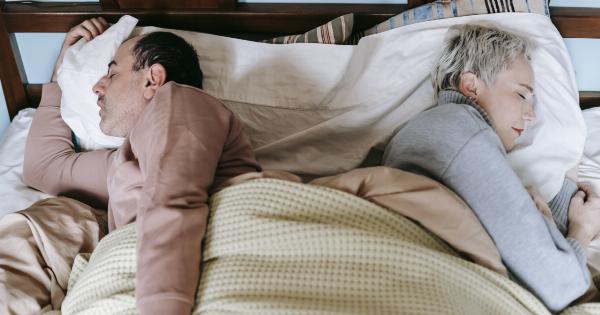Getting a good night’s sleep is essential for overall health, but it’s not always easy to achieve, especially if you suffer from middle back pain. The middle back is the area around your spine between your neck and your lower back.
It’s also known as the thoracic spine. Middle back pain can be caused by a variety of factors, including poor sleeping habits. Here are some of the sleeping habits that can lead to middle back pain.
Sleeping on your stomach
Sleeping on your stomach can cause middle back pain because it puts pressure on your back muscles and spine. When you lie on your stomach, your spine is forced into an unnatural position, which can cause your muscles to become strained.
This can lead to pain and discomfort in your middle back. If you’re a stomach sleeper, try sleeping on your side or back instead.
Sleeping on an old or unsupportive mattress
Your mattress is one of the most important factors in getting a good night’s sleep. If your mattress is old or unsupportive, it can cause middle back pain.
When your mattress doesn’t provide enough support, your spine can’t stay in a neutral position, which can cause your muscles to become tense and sore. If you’re experiencing middle back pain, consider getting a new mattress that provides better support.
Sleeping in a twisted position
Sleeping in a twisted position can also cause middle back pain. When you twist your body while sleeping, you put pressure on your spine and muscles, which can lead to pain and discomfort.
It’s important to sleep in a neutral position, with your spine in a straight line, to avoid putting unnecessary pressure on your middle back.
Using too many pillows
Using too many pillows can also cause middle back pain. When you sleep with too many pillows, your head and neck are pushed forward, which can cause your middle back to arch. This can lead to strain on your middle back muscles and discomfort.
It’s best to sleep with only one or two pillows, depending on your preference.
Not using the right pillow
The type of pillow you use can also affect your middle back. If your pillow is too flat or too fluffy, it can cause your head and neck to be in an unnatural position, which can lead to middle back pain.
It’s important to use a pillow that supports your head and neck and keeps your spine in a neutral position.
Sleeping in a cold room
Sleeping in a cold room can also cause middle back pain. When your muscles are cold, they become stiff and can be more easily strained.
If you’re experiencing middle back pain, try keeping your bedroom at a comfortable temperature to avoid putting unnecessary strain on your muscles.
Sleeping in the wrong position
Sleeping in the wrong position can cause middle back pain. It’s important to sleep in a position that keeps your spine in a neutral position.
If you’re experiencing middle back pain, try sleeping on your back or side with a pillow between your knees to keep your spine aligned.
Not getting enough sleep
Not getting enough sleep can also cause middle back pain. When you’re tired, your muscles become fatigued and can become more easily strained. It’s important to get enough sleep each night to allow your muscles to rest and recover.
Not stretching before bed
Not stretching before bed can also cause middle back pain. When your muscles are tight, they can become more easily strained during the night. It’s important to stretch before bed to help loosen up your muscles and prevent middle back pain.
Using your phone or tablet in bed
Using your phone or tablet in bed can also cause middle back pain. When you’re hunched over your device, you put pressure on your middle back muscles, which can lead to pain and discomfort.
It’s important to avoid using your phone or tablet in bed and instead use a desktop or laptop computer at a desk.



























